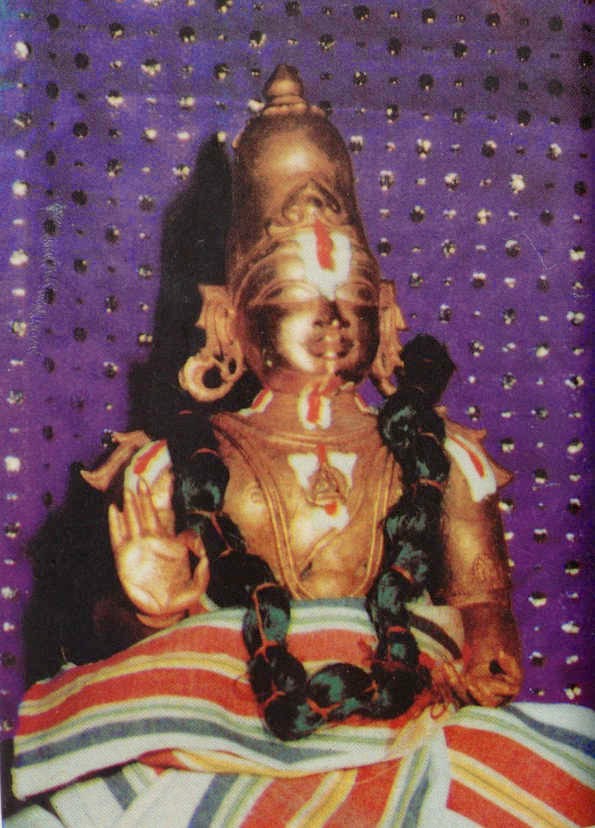Thiruvazhmozhi Pillai
AMSAM Varadaraja Perumal
ACHARYA Pillai Lokacharyar, Kurakulotthama Dasar, ThirukkaNNangudi piLLai (for thiruvAimozhi essence), ViLanchOlai piLLai (for Rahasya arthams), nAlUr AchAn piLLai (for Thiruvazhmozhi Eedu vyakhyanam)
SISHYAS Azhagiya maNavALa mAmunigaL, satagOpa jIyar (bhavishyadhAcAryan sannidhi), thathvEsa jIyar, etc
BIRTH MONTH Vaikasi
BIRTH STAR Visakam
PLACE OF DEATH Alwar thirunagari
PARENTS Mother disciple of Pillai Lokacharya
PLACE OF BIRTH Alwar Thirunagari, raised at Kunthagai, near Madurai
OTHER NAMES Satagopa dasar, thirumalai azhwar, Sri sailesar , kAdu vetti guru @ Alwarthirunagari
WORKS PeriyAzhwAr thirumozhi svApadhEsam
LINKS
https://en-gb.facebook.com/sriadhikesavaperumalpeyalwartemple/posts/501737433230145
http://www.ibiblio.org/sripedia/ramanuja/archives/nov05/msg00134.html
http://guruparamparai.wordpress.com/2012/09/19/thiruvaimozhi-pillai/
http://ramanujadasan.wordpress.com/tag/thiruvaimozhi-pillai/
https://sreevaishnavam.wordpress.com/category/acharya/thiruvaimozhi-pillai/
https://srivaishnavasri.wordpress.com/tag/thiruvaimozhi-pillai/
AMSAM Varadaraja Perumal
ACHARYA Pillai Lokacharyar, Kurakulotthama Dasar, ThirukkaNNangudi piLLai (for thiruvAimozhi essence), ViLanchOlai piLLai (for Rahasya arthams), nAlUr AchAn piLLai (for Thiruvazhmozhi Eedu vyakhyanam)
SISHYAS Azhagiya maNavALa mAmunigaL, satagOpa jIyar (bhavishyadhAcAryan sannidhi), thathvEsa jIyar, etc
BIRTH MONTH Vaikasi
BIRTH STAR Visakam
PLACE OF DEATH Alwar thirunagari
PARENTS Mother disciple of Pillai Lokacharya
PLACE OF BIRTH Alwar Thirunagari, raised at Kunthagai, near Madurai
OTHER NAMES Satagopa dasar, thirumalai azhwar, Sri sailesar , kAdu vetti guru @ Alwarthirunagari
WORKS PeriyAzhwAr thirumozhi svApadhEsam
LINKS
https://en-gb.facebook.com/sriadhikesavaperumalpeyalwartemple/posts/501737433230145
http://www.ibiblio.org/sripedia/ramanuja/archives/nov05/msg00134.html
http://guruparamparai.wordpress.com/2012/09/19/thiruvaimozhi-pillai/
http://ramanujadasan.wordpress.com/tag/thiruvaimozhi-pillai/
https://sreevaishnavam.wordpress.com/category/acharya/thiruvaimozhi-pillai/
https://srivaishnavasri.wordpress.com/tag/thiruvaimozhi-pillai/









